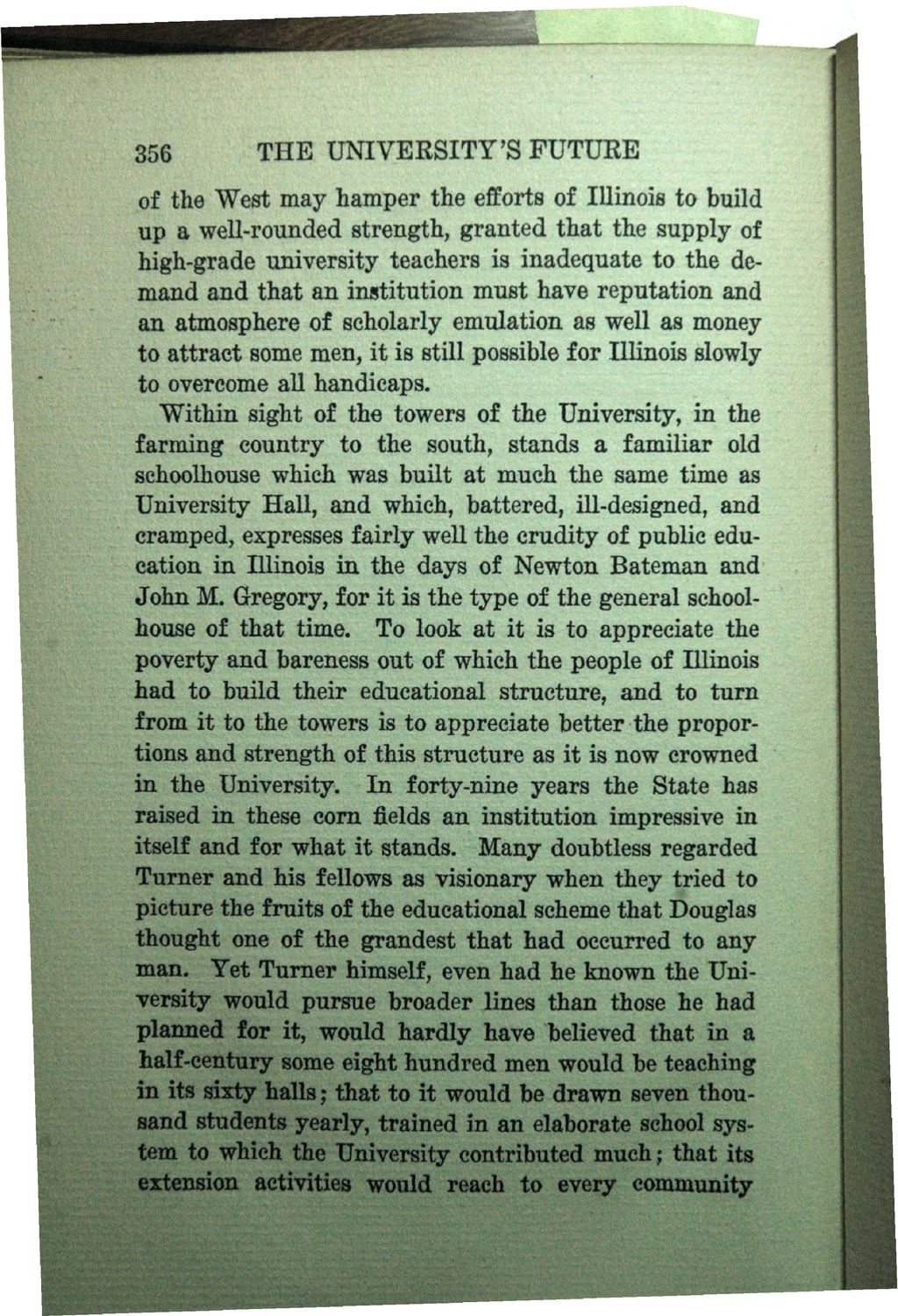| |
| |
Caption: Book - History of the University (Nevins)
This is a reduced-resolution page image for fast online browsing.

EXTRACTED TEXT FROM PAGE:
356 THE UNIVERSITY'S FUTtJBE of the West may hamper the efforts of Illinois to build up a well-rounded strength, granted that the supply of high-grade university teachers is inadequate to the demand and that an institution must have reputation and an atmosphere of scholarly emulation as well as money to attract some men, it is still possible for Illinois slowly to overcome all handicaps. Within sight of the towers of the University, in the farming country to the south, stands a familiar old schoolhouse which was built at much the same time as University Hall, and which, battered, ill-designed, and cramped, expresses fairly well the crudity of public education in Illinois in the days of Newton Bateman and John M. Gregory, for it is the type of the general schoolhouse of that time. To look at it is to appreciate the poverty and bareness out of which the people of Illinois had to build their educational structure, and to turn from it to the towers is to appreciate better the proportions and strength of this structure as it is now crowned in the University. In forty-nine years the State has raised in these corn fields an institution impressive in itself and for what it stands. Many doubtless regarded Turner and his fellows as visionary when they tried to picture the fruits of the educational scheme that Douglas thought one of the grandest that had occurred to any man. Yet Turner himself, even had he known the University would pursue broader lines than those he had planned for it, would hardly have believed that in a half-century some eight hundred men would be teaching in its sixty halls; that to it would be drawn seven thousand students yearly, trained in an elaborate school system to which the University contributed much; that its extension activities would reach to every community
| |